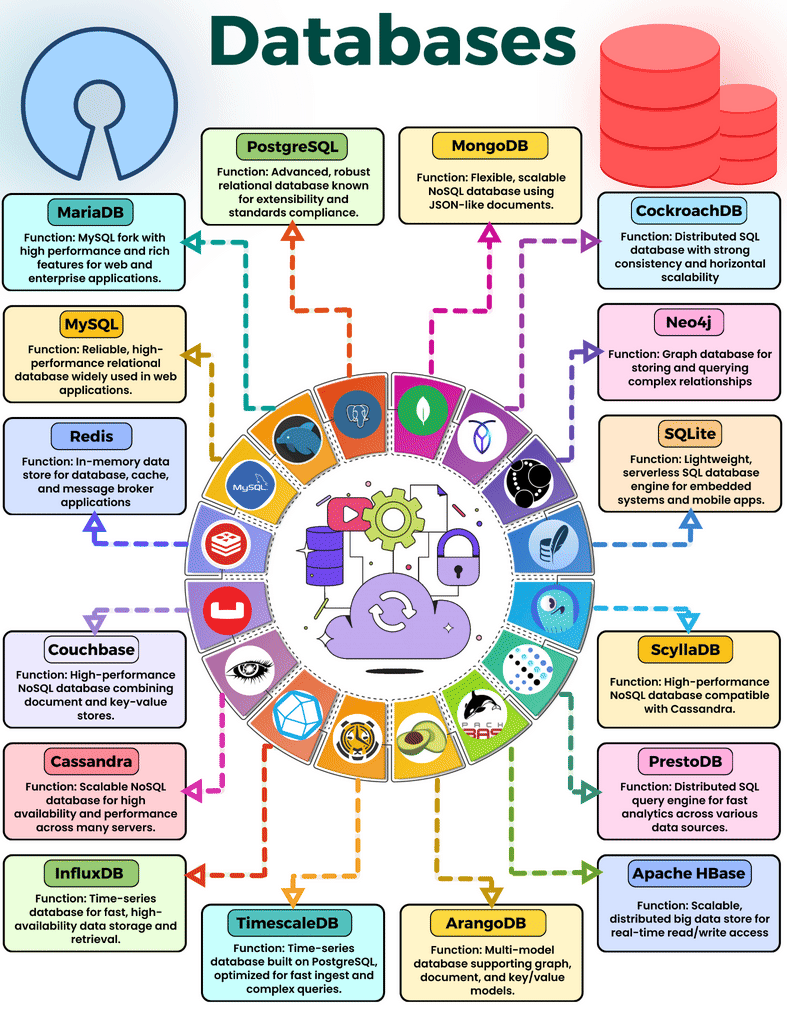- Published on
How Databases Work?
- Authors

- Name
- AbnAsia.org
- @steven_n_t

Databases function using a Database Management System (DBMS), which provides tools for data storage, retrieval, and manipulation. The main components include: -> Tables: Store data in a structured format (rows & columns).
-> Schemas: Define how data is organized (tables, relationships, constraints).
-> Indexes: Speed up searches by providing quick access paths.
-> Queries: SQL (Structured Query Language) is commonly used to retrieve or modify data.
-> Transactions: Ensure data integrity with ACID properties (Atomicity, Consistency, Isolation, Durability).
How many types? -> Relational Databases (RDBMS): Use tables with predefined schemas and relationships (e.g., MySQL, PostgreSQL, SQL Server).
-> NoSQL Databases: Handle unstructured or semi-structured data with flexible schemas (e.g., MongoDB, Cassandra).
-> In-Memory Databases: Store data in RAM for high-speed access (e.g., Redis).
-> Graph Databases: Use nodes and edges to store relationships (e.g., Neo4j).
How Databases Interact? Databases interact with applications and users through: -> SQL Queries: Applications send queries to retrieve, insert, update, or delete data.
-> APIs: Applications connect to databases using APIs like JDBC (Java Database Connectivity) or RESTful services.
-> Client-Server Architecture: Databases operate on a server, and clients (applications) request data over a network.
-> ORM (Object-Relational Mapping): Developers use ORMs (e.g., Hibernate, SQLAlchemy) to interact with databases using objects instead of raw SQL.
-> Replication & Backup: Databases synchronize across multiple servers for fault tolerance and disaster recovery. Databases are structured collections of data that efficiently store, manage, and retrieve information. They organize data into tables, records, and fields, following a defined schema. A Database Management System provides tools for data storage, retrieval, and manipulation. Some types of databases include Relational Databases, NoSQL Databases, In-Memory Databases, and Graph Databases. Databases interact with applications and users through SQL Queries, APIs, and Client-Server Architecture.
Author
AiUTOMATING PEOPLE, ABN ASIA was founded by people with deep roots in academia, with work experience in the US, Holland, Hungary, Japan, South Korea, Singapore, and Vietnam. ABN Asia is where academia and technology meet opportunity. With our cutting-edge solutions and competent software development services, we're helping businesses level up and take on the global scene. Our commitment: Faster. Better. More reliable. In most cases: Cheaper as well.
Feel free to reach out to us whenever you require IT services, digital consulting, off-the-shelf software solutions, or if you'd like to send us requests for proposals (RFPs). You can contact us at [email protected]. We're ready to assist you with all your technology needs.

© ABN ASIA